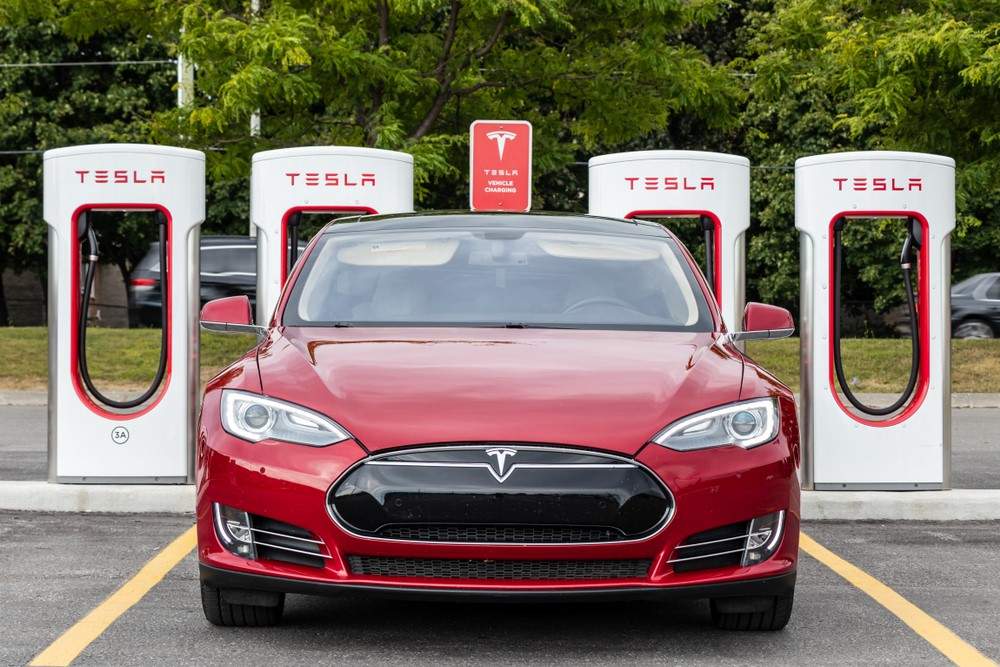Let’s talk about Tesla.
The automaker famous for its electric vehicles (and for its CEO) has been splashing headlines for the past few weeks.
Why? Well, mainly for its losses.
Tesla reported weaker than expected third quarter (Q3) results, with both earning-per-share and revenue of $23.35 billion falling short of Bloomberg’s estimates.
Shares for this electric vehicle maker have fallen about 19% since reporting earnings, but the stock is still up 67% this year.
The question is…
What Happened, Tesla?

The company attributes this revenue dip to “planned downtimes for factory upgrades.”
In Q3, Tesla produced about 430,000 vehicles and delivered about 435,000 vehicles.
Unfortunately, these numbers show a decline in sales volume. In Q2 Tesla produced nearly 480,000 vehicles and delivered over 466,000 vehicles.
Again, why?
One economic factor is currently playing against Tesla’s EV sales: rising interest rates.
High interest rates are making it difficult for consumers to finance a new car.
As Elon Musk, CEO, stated in Tesla’s latest earnings call:
“I just can’t emphasize this enough that the vast majority of people buying a car is about the monthly payment, and as interest rates rise, the proportion of that monthly payment as interest increases naturally.
So, if interest rates remain high, or if they go even higher, it’s that much harder for people to buy the car. They simply can’t afford it.”
So, what are Tesla’s prospects in the long term?
Can it sell EVs in this market?
Well, there are actually three key factors playing in Tesla’s favor.
3 Ways Tesla Can Get Back on Top
- Tesla’s 2023 sales forecast remains the same: at a volume target of around 1.8 million vehicles.
- We could see some volatility for EV growth due to the same reason Tesla saw a weak Q3: people want to spend less in a tighter economy. However, this doesn’t change our beliefs that EVs will grab more market share in the long term.
- There’s a huge catalyst for the EV market coming next year.
Starting January 1, 2024, eligible buyers will be able to transfer their $7,500 federal tax credit to a car dealer, which would lower the purchase price of your vehicle. That includes EVs.
Right now, you can benefit from the federal tax credit, but only after you’ve filed your tax returns for the next year.

Going forward, the U.S. government wants to make the tax credit available to the car dealers at the point-of-sale.
So when you purchase an EV, you’ll have to take the tax credit against your taxes.
To illustrate this, here’s a helpful example from Barron’s:
“Example: In 2024, a buyer who qualifies for the $7,500 federal tax credit on a Tesla will get $7,500 off the price instead of a 2024 tax refund. It will be the dealer, not the buyer, who must collect the credit.”
Now it will just be a discount put on the car when you buy it at the dealership.
That changes the equation for a lot of people because, first off, not everyone qualified for the tax credits. So it didn’t make sense.
You might have even bought the car, but with the worry that they’d pull back the tax credit after the sale. With this new policy in place, you’re getting the credit up front. Or rather, the dealer gets it, and it marks down the price of the car before you sign on the dotted line.
This new tax credit will likely work in Tesla’s favor.
As InsideEV notes, this transfer rule sets the stage “for ‘rapid-fire growth’ in electric vehicle sales volumes in the U.S.”
💡 Bonus Tip: Keep in mind that Tesla is more than a multinational EV company.
It’s also a clean energy powerhouse.
From solar roofs, to Powerwalls and Megapacks, the company is constantly innovating new ways to generate sustainable and renewable energy. In turn, this helps us reduce our reliance on the power grid.

🔥 Hot Take: Keep Watching the EV Market

Ron Baron is an American mutual fund manager, not to mention a long-time Tesla bull, and an early investor.
He recently shared with MarketWatch: “Tesla’s stock will keep rising over time and its market capitalization can grow from its current $630 billion to as much as $4 trillion in 10 years.”
EVs, AI, cryptocurrency … these are some of the biggest megatrends in the world today. And in Ian King’s Strategic Fortunes service, we’re recommending stocks that stand to profit as these trends evolve and gain momentum.
To see how, go here to learn more!
Until next time,

Director of Investment Research, Banyan Hill Publishing










